Social media management is a must for modern brands, but it can be very time-consuming. In today’s frantic digital era, the correct social media posting tools can make all the difference to your marketing.
Whether you’re a blogger, small business, nonprofit, or marketing manager, social media management is essential—but likely not your only job. The challenge? Each social network has its own best practices, optimal posting times, and content requirements.
Successful social media marketers need to be creative, engaging, strategic, and above all—efficient. Manually posting to Facebook, Instagram, TikTok, LinkedIn, Pinterest, Twitter, and other networks isn’t just time-consuming—it’s practically impossible to do effectively.
Fortunately, there are powerful social media posting tools that can streamline your workflow, automate scheduling, and maximize your content’s performance across channels. This definitive guide discusses the best social media management tools of 2025 to save your time and maximize your social media ROI.
What is a Social Media Posting Tool?
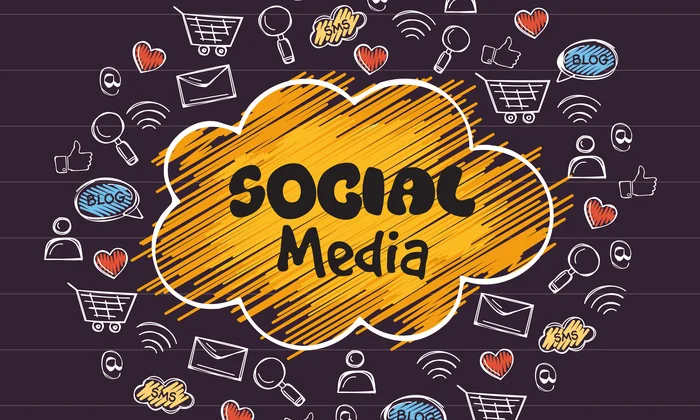
Social media posting tools are software specifically designed to allow you to create, schedule, publish, and in most instances analyze content on multiple social networks from a single dashboard. They spare you the trouble of logging into each network separately, making it easier for marketers to maintain a consistent posting schedule and cohesive social media strategy.
Top-rated social media management tools offer features such as:
- Content scheduling and automated publishing
- Multi-platform support for all major social networks
- Content calendar visualization
- Performance analytics and reporting
- Team collaboration features
- Content curation suggestions
- AI-driven caption generation
- Best time to post suggestions
- Hashtag management
- Social listening and engagement tools
By streamlining your social media operations in one location, these tools not only save time but also provide insights to optimize your strategy and engagement. According to recent reports, businesses that use social media management tools save an average of 6+ hours a week over manual posting.
The Power of Auto-Publishing Across Multiple Networks

Among the most valuable features of modern social media software are sophisticated auto-publishing capabilities. This capability goes beyond simple scheduling to offer smart, platform-sensitive content delivery:
- Platform-specific design: Automatically resizes content size, character count, and hashtag format for each platform’s requirements
- Cross-platform consistency: Maintains brand voice across multiple networks while optimizing based on each platform’s particular audience
- Failsafe publishing: Publishes posts even during instances of internet outages or when you’re not around
- Sequential posting: Posts companion content in intentional series to build storytelling and interaction
- Approval processes: Allows team members to prepare content but requires managerial approval before publishing
- API-based posting: API integration directly with platform APIs for more reliable publishing than less sophisticated scheduling tools
Auto-publishing features have become smarter kinds that employ algorithms which automatically select the best type of content appropriate for each social network you cater to and recommend optimal improvements prior to actual publishing. Such activities make optimum capability for engagement possible on each social network you manage.
Best Social Media Posting and Scheduling Tools of 2025
1. Buffer
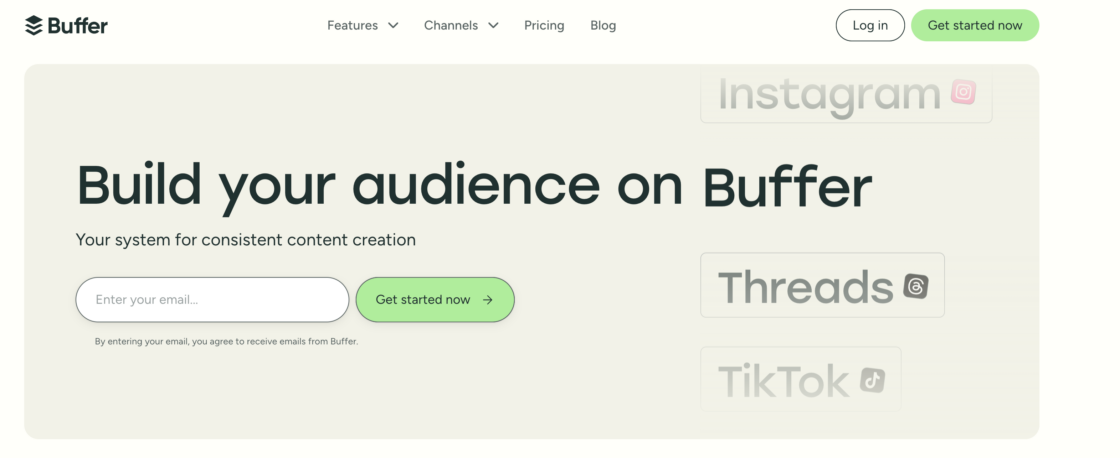
Buffer remains one of the industry’s most user-friendly and effective social media scheduling tools. It allows you to customize content for each platform and suggests optimal posting times to maximize your reach.
Key Features:
- Intuitive content calendar with drag-and-drop functionality
- Custom publishing schedules for each social network
- AI-assisted caption writing
- Detailed analytics and performance tracking
- Instagram Stories and Reels scheduling
- First comment scheduling for hashtags
- Link in bio tool for Instagram
Pricing: Buffer offers a free plan with limited features for small businesses just getting started. Their paid plans range based on number of channels used.
Best For: Buffer is ideal for small to medium-sized businesses and solo marketers who value simplicity and efficiency.
2. Sprout Social

Sprout Social is a powerful social media management platform with full-featured solutions for big teams and agencies. Their analytics and CRM integration capabilities set them apart from basic scheduling tools.
Key Features:
- All-in-one social inbox for streamlined engagement
- Advanced scheduling and publishing tools
- Comprehensive analytics and custom reports
- Social listening and reputation management
- Team workflows with permissions and approval systems
- CRM integration capabilities
- Chatbot automation
Social Listening Features: Sprout Social excels in its listening capabilities as it monitors brand mentions, business trends, and competitor activity across several platforms at once. The tool offers sentiment analysis to understand the mood of the audience and catches the topics of conversation bubbling around your brand. This facilitates timely engagement with customers and detects PR crises in the making.
Pricing: Sprout Social is higher-end, with prices beginning at $199 per user per month up to $399 per user per month. Pricier than some of the other options, the level of features makes it a good value for larger-scale businesses.
Best For: Midsize to large organizations, advertising agencies, and enterprise-scale companies requiring enhanced capabilities and teamwork.
3. Hootsuite
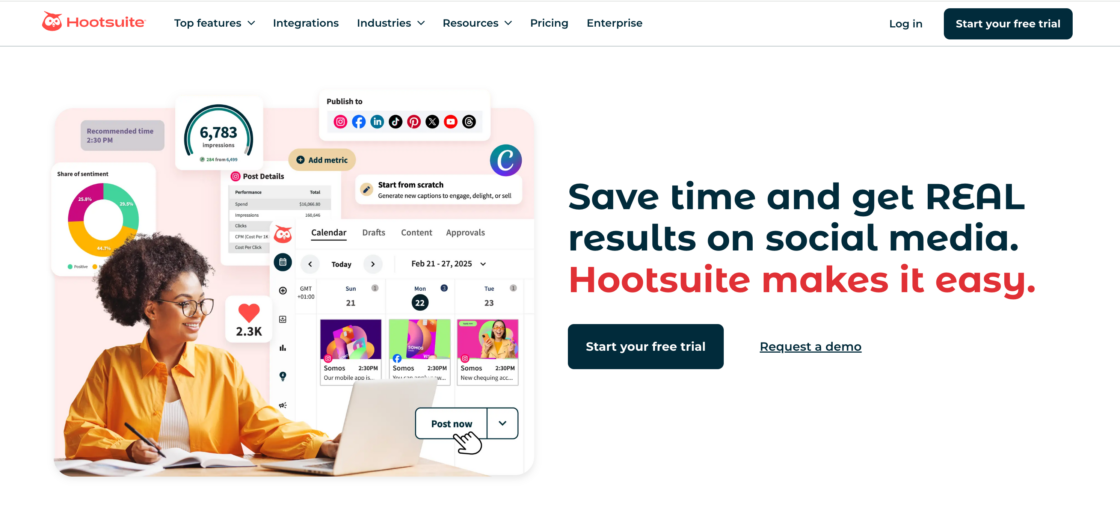
As one of the original social media dashboard tools, Hootsuite has evolved to offer connections with 35+ social networks and a comprehensive set of management features.
Key Features:
- Multi-stream dashboard for monitoring multiple feeds
- Content planning with customizable calendars
- Team management with custom permission levels
- Content creation tools with Canva integration
- AI-powered caption assistance
- Advanced analytics and reporting
- Integration with over 250 apps
Multi-Platform Management: Hootsuite provides better cross-platform management capabilities, managing over 35 different social networks from a single dashboard. The platform’s unique stream-based interface allows for multiple feeds to be shown simultaneously, enabling the tracking of engagement, mentions, and competitor research on all channels in one look. Its bulk scheduling features give users the capability to schedule and plan up to 350 posts at one time, with respective platform-specific optimizations for each network.
Pricing: Hootsuite provides a 30-day free trial for new customers. Their Professional plan is $99/month for a single user and 10 social profiles. Advanced plan cost $249 with additional features.
Best For: Companies of any size that have to oversee several social channels and enjoy a personalized dashboard experience.
4. CoSchedule
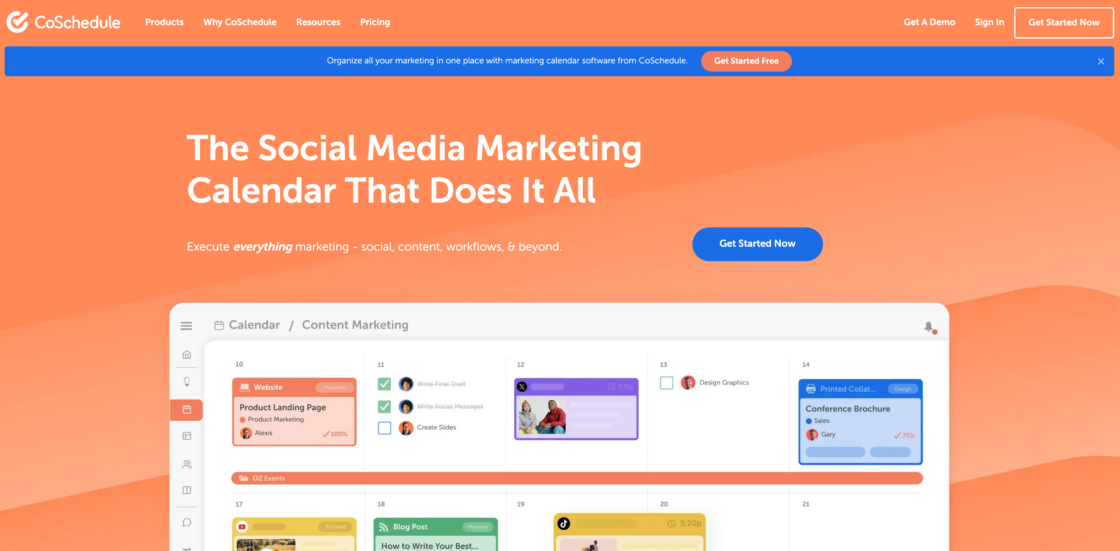
CoSchedule stands out by integrating social media scheduling with broader content marketing planning. It’s ideal for teams managing both blog content and social distribution.
Key Features:
- Unified marketing calendar for all content
- Social media scheduling across major platforms
- Content curation and resharing capabilities
- Team collaboration tools
- Content performance analytics
- Automated scheduling based on best times
- Integration with popular blogging platforms
Pricing: CoSchedule provides a free 14-day trial. Their Marketing Calendar starts at $19/month, while their Marketing Suite requires custom pricing.
Best For: Content marketing teams that wish to synchronize their social media strategy with their general content calendar.
5. Sendible
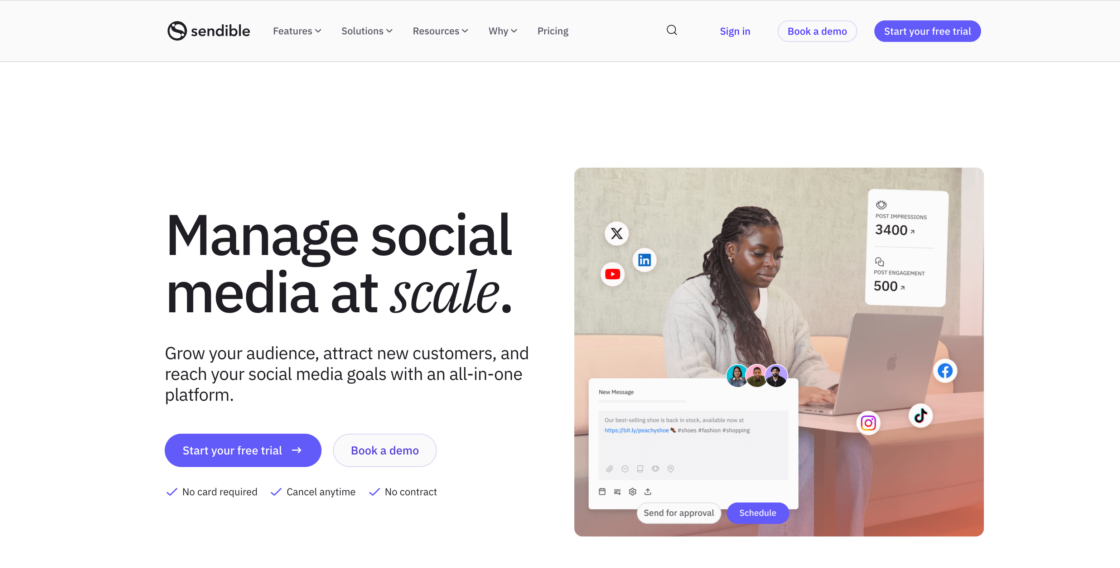
Sendible is designed specifically with agencies in mind, offering strong client management features alongside comprehensive social media tools.
Key Features:
- Priority inbox for managing engagement
- Client management tools and white-labeled reports
- Content suggestions and RSS integration
- Custom publishing workflows
- Team collaboration features
- Visual content calendar
- Content creation with built-in design tools
Engagement Analytics and Reporting: Sendible offers a full set of engagement metrics that go beyond likes and shares. It monitors audience sentiment, response rate, and conversion rates that are linked with your social campaigns. It automatically calculates ROI with customizable reports assessing engagement against objectives you set, while comparative benchmarking offers room to benchmark performance against industry standards. Sophisticated visual analytics tools render the metrics readable to employees and clients alike.
Pricing: Sendible starts at $29/month for one user and 6 social profiles, with their most popular Scale plan at $199/month for 7 users and 49 profiles. All plans come with a 14-day free trial.
Perfect for: Marketing teams and agencies that manage multiple clients or brands.
Supplementary Social Media Tools for 2025
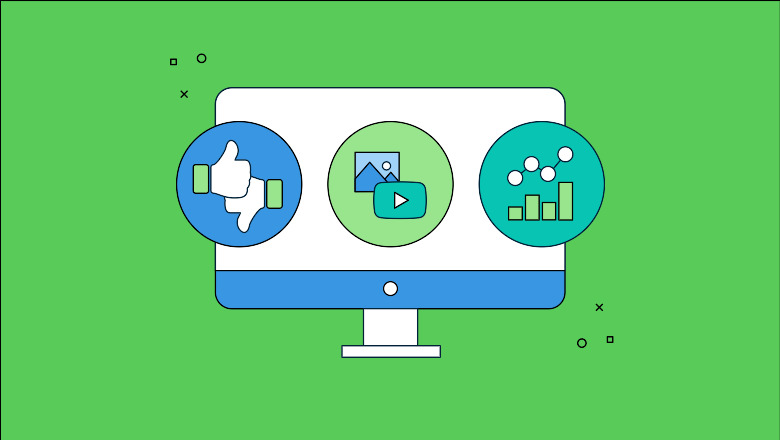
While the platforms above handle core scheduling and posting functions, these specialized tools can enhance your social media strategy in unique ways:
1. Juicer

Juicer improves your social media publishing approach by wrapping all of your content into one stunning social feed that can be embedded onto your website. It will automatically import posts from your social channels and publish them in a customizable feed so you can maximize the value of your social content.
Key Features:
- Aggregates content from 15+ social networks
- Displays user-generated content from branded hashtags
- Customizable layouts and design options
- Moderation tools to filter content
- Auto-updates as new content is posted
- Analytics on feed performance
- Easy embedding on any website platform
User-Generated Content Capabilities: Juicer particularly shines at identifying and highlighting user-generated content in its hashtag and mention tracking tools. The tool automatically gathers UGC from across various platforms as users tag your brand or your branded hashtags and displays it as a curated stream. Advanced filtering and moderation technologies guarantee only acceptable content is shared, while analytics from the tool enable monitoring on which UGC works best. This feature converts passive followers to active brand champions, greatly growing your content material resources.
Pricing: Juicer offers a free plan for basic needs with limited features, with paid plans starting at $15/month for additional features like more sources, custom CSS, and moderation tools.
Best For: Any brand looking to showcase their social content on their website, drive engagement, and leverage social proof to convert website visitors.
2. IFTTT
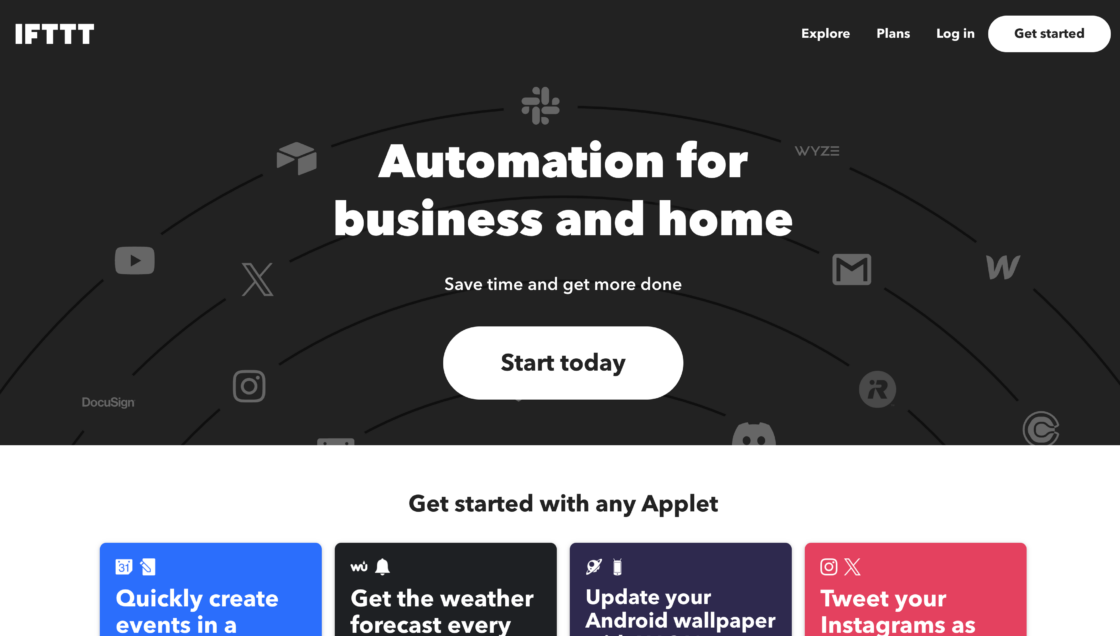
“If This, Then That” (IFTTT) provides powerful automation capabilities for your social media strategy, allowing you to create custom workflows across platforms.
Key Features:
- Create “recipes” that trigger automatic actions
- Connect social media accounts with other apps and services
- Automatically cross-post content based on rules
- Save time with custom automation sequences
- Integrate with smart devices and IoT products
Pricing: IFTTT offers a free plan for basic use with up to 2 applets. Pro plans start at $2.48/month for those needing more advanced automation.
Best For: Tech-savvy marketers looking to create advanced automation between their social media and other digital tools.
3. Meet Edgar
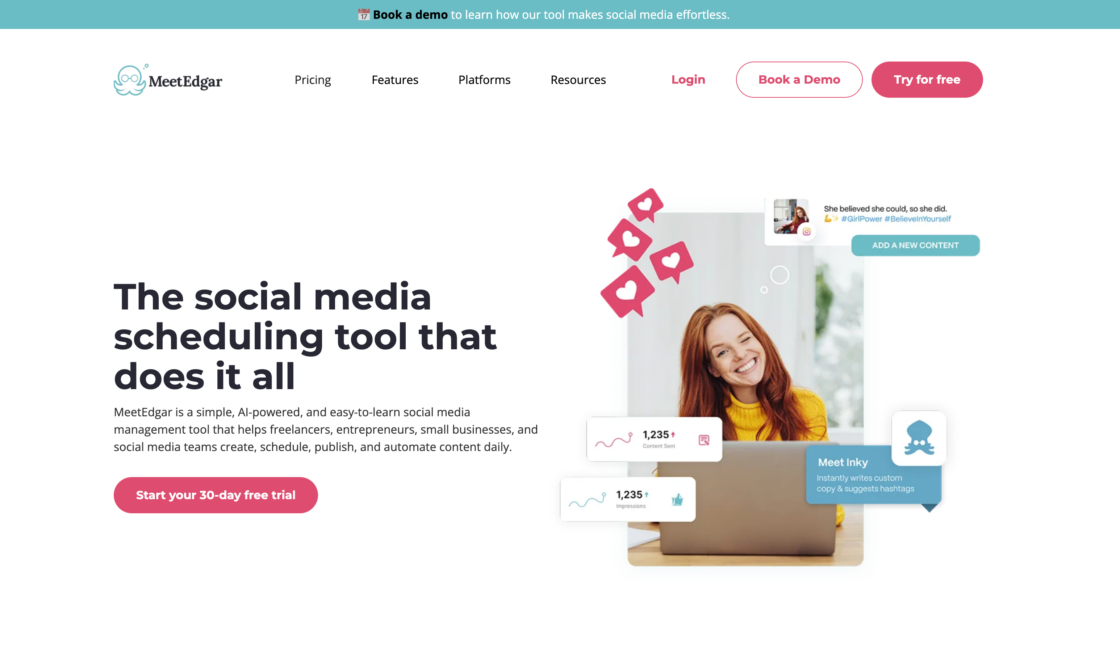
Meet Edgar specializes in content recycling, helping you get more mileage out of your best-performing posts by automatically resharing them.
Key Features:
- Content library organized by categories
- Automatic content recycling
- Category-based scheduling
- Content variation to avoid repetition
- Evergreen content management
- Analytics to track performance
Pricing: Meet Edgar starts at $29.99/month for 5 social media accounts and unlimited content, with their most popular plan at $49.99/month for 25 accounts.
Best For: Content creators and businesses who want to maximize their content’s lifespan and maintain consistent posting with less effort.
Optimal Posting Times: The Science of Social Media Timing

One of the most helpful things about advanced social media tools is that they are able to identify and utilize the best times to post for maximum engagement. This has gone well beyond merely scheduling:
How Advanced Tools Determine Optimal Posting Times
Modern social media management platforms analyze several key factors to recommend optimal posting times:
- Historical engagement patterns: Analyzes when your specific audience has historically engaged most with your content
- Platform-specific peak times: Considers the unique peak usage times for each social network
- Audience demographics: Factors in time zones and activity patterns based on your follower demographics
- Content type optimization: Suggests different times for different content formats (video, images, links)
- Competitor activity timing: Some tools analyze when your competitors post and suggest strategic alternatives
- Industry benchmarks: Incorporates data about when similar businesses in your industry see peak engagement
Platform-Specific Timing Considerations
Each social media platform has its own specific best times to post:
- Instagram: Stories perform well 9pm-10pm, and feed posts have improved engagement 11am-1pm
- LinkedIn: Business content performs well Tuesday-Thursday, 8am-2pm
- Facebook: Weekday afternoons (1pm-3pm) tend to have strongest engagement
- Twitter / X: Early morning (7am-9am) and evening (6pm-9pm) tend to have more responses
- TikTok: Evening (7pm-11pm) especially Wednesday-Friday have highest engagement
By applying these timing tips, social media software can post for optimal visibility times automatically, boosting the potential for engagement exponentially without unnecessarily monitoring or posting continuously.
How to Choose the Right Social Media Posting Tool
With so many options available, selecting the best social media posting tool for your needs requires careful consideration of several factors:
1. Platform Support
Ensure the tool supports all the social networks you use. While most cover Facebook, Instagram, and Twitter, support for platforms like TikTok, LinkedIn, Pinterest, and YouTube varies significantly between tools.
2. Team Size and Collaboration Needs
If you’re working in a team, prioritize tools that offer collaboration features, approval workflows, and role-based permissions that match your organizational structure.
3. Budget Constraints
Social media tools range from free to several hundred dollars per month. Be realistic about your budget and choose a tool that offers the best value for your specific needs.
4. Scalability
Consider your future growth. Your tool of choice should be capable of expanding with your company, allowing you to add more social profiles, employees, or sophisticated features when the time is right.
5. Analytics Requirements
If measuring performance matters (and it should), think about the depth of analytics each tool offers. Some offer basic metrics, while others offer rich reporting functionality.
6. Integration Features
Ensure the tool is compatible with other tools you use, such as your CRM, email service provider, or content management system.
7. Content Creation Features
Some tools offer built-in design capabilities or AI writing assistants that can streamline your content creation process.
Latest Trends in Social Media Posting Tools for 2025

The social media landscape continues to evolve at a breakneck speed, and the leading posting tools are innovating to keep up:
1. AI-Driven Content Creation
Several tools now offer AI-powered writing assistants that will generate captions, suggest hashtags, and even construct entire posts from brief prompts. This feature is also becoming increasingly sophisticated, enabling marketers to save time without compromising on quality.
2. Video-First Features
With the rise of short-form video content on platforms like TikTok, Instagram Reels, and YouTube Shorts, top social media tools are expanding their video scheduling and management capabilities.
3. Predictive Analytics
Advanced analytics that go beyond reporting what happened to predicting what will happen are becoming the standard in high-end software, allowing marketers to make data-driven decisions.
4. Cross-Platform Optimization
Software is getting better at automatically optimizing content for each platform’s special requirements and audience tendencies, reducing the need for tweaking.
5. Advanced Automation
Workflow automation capabilities are becoming more advanced, enabling sophisticated posting schedules, conditional logic, and automated responses to specific triggers.
Social Media Management for Different User Types
Social media tools have evolved to serve distinct user types with specialized features and capabilities:
For Individual Content Creators and Freelancers
Individual content creators have unique social media management needs that differ from businesses and agencies:
Recommended Tools: Buffer, Later, or Hootsuite’s lower-tier plans
Key Features for Individuals:
- Affordable pricing with single-user plans
- Simplified interfaces with shorter learning curves
- Mobile apps for on-the-go content management
- Personal brand analytics and growth tracking
- Cross-posting optimization to maintain consistent presence
- Content storage and organization
- Time-saving automation for consistent posting schedules
Solo creators benefit most from tools that offer ease and cost but are still able to give the essential scheduling and analytics features. They don’t necessarily need advanced approval processes or team collaboration features but do require reliable posting schedules to maintain regularity of engagement while they focus on content creation.
For Small Businesses and Solopreneurs
Recommended: Buffer or Hootsuite
Buffer’s straightforward interface and affordable pricing make it ideal for small businesses just beginning to formalize their social media strategy. Its free plan allows you to test the waters before investing in more advanced features.
For Marketing Agencies
Recommended: Sprout Social or Sendible
These platforms excel at client management, offering white-label reporting, team collaboration features, and the ability to manage multiple brands efficiently. Their comprehensive analytics also make it easy to demonstrate ROI to clients.
For Content-Heavy Brands
Recommended: CoSchedule or Meet Edgar
Brands that produce high volumes of content will benefit from these tools’ content recycling and integrated content marketing features, ensuring consistent promotion across channels.
For Visual Brands
Recommended: Later or Hootsuite
Brands focusing heavily on Instagram, Pinterest, or other visual platforms will appreciate these tools’ visual planning features, including feed preview and media organization capabilities.
Maximizing Your Social Media Strategy with Juicer

While social media posting tools help you distribute content effectively, Juicer helps you showcase that content on your website, creating a seamless connection between your social presence and web properties.
By embedding a Juicer social media feed on your website, you can:
- Increase engagement by displaying fresh, dynamic content that updates automatically
- Boost social proof by showcasing your active social presence to website visitors
- Leverage user-generated content from hashtags and mentions across platforms
- Reduce bounce rates by giving visitors more content to explore
- Drive social follows by making your social accounts easily discoverable
This complementary approach ensures that your social media efforts go further, creating additional touchpoints for audience engagement beyond the social platforms themselves.
Conclusion
The right social media posting tool can transform your marketing efforts, saving time while maximizing the reach and effectiveness of your content. As we move through 2025, these tools continue to evolve with more AI capabilities, more detailed analytics, and streamlined workflows.
For the majority of businesses, the return on investment for a quality social media management tool comes in the form of increased efficiency, better content planning, and more strategic ways of interacting with the audience. Whether you choose Buffer for simplicity, Sprout Social for feature completeness, or another tool that most closely aligns with your specific needs, the idea is to leverage technology to bring consistency and strategy to your social media footprint.
Don’t forget to round out your posting strategy with Juicer to showcase your social content on your website, creating a full strategy that maximizes every post you create.
Frequently Asked Questions
While there is a degree of overlap, post tools are geared towards content publication and scheduling and management platforms include a broader scope of features including team collaboration, listening, engagement management, and analytics.
Free tools can be perfect for small businesses and individuals with easy requirements. But they will typically limit the number of accounts you can connect, posts you can schedule, and what other advanced features you can access. The more advanced your social approach, the more benefit is typically derived with paid tools.
Most businesses report saving 5-10 hours per week by using social media posting tools. The exact time savings depends on how many platforms you manage and how frequently you post.
Yes, indirectly. By scheduling posts for optimal times, maintaining consistency, and providing analytics to refine your strategy, these tools help you reach your audience when they’re most receptive to your content.
Not quite. All comprehensive social posting tools support the majority of leading networks. A couple of tools that are specialist flourish on one network (like Later for Instagram or TweetDeck for Twitter). Your specific need will pit one product against a partnership of the best efficiency.
The best tools stay current with platform changes and update their features accordingly. Many also provide guidance on best practices and optimizations for each platform’s current algorithm.
